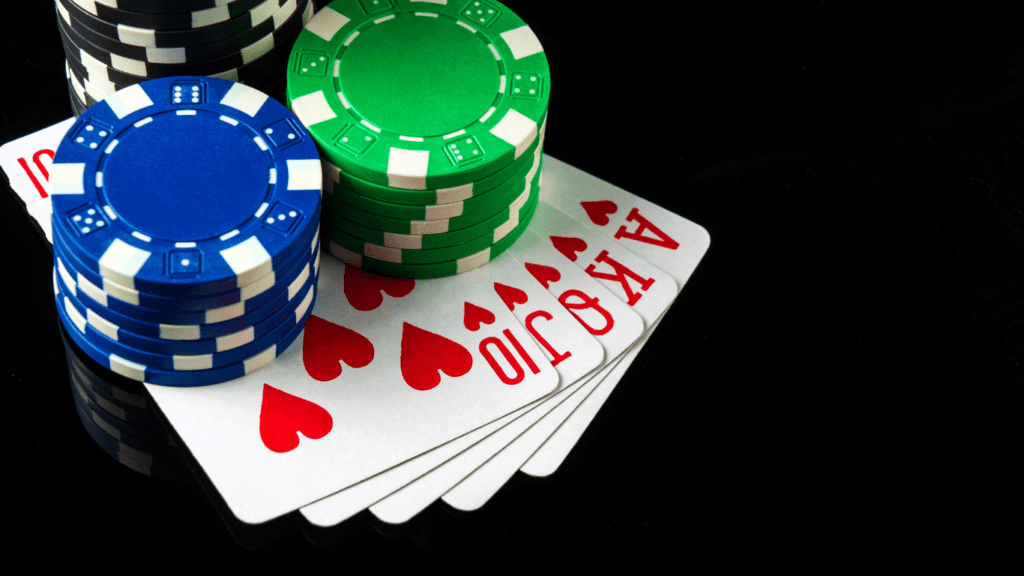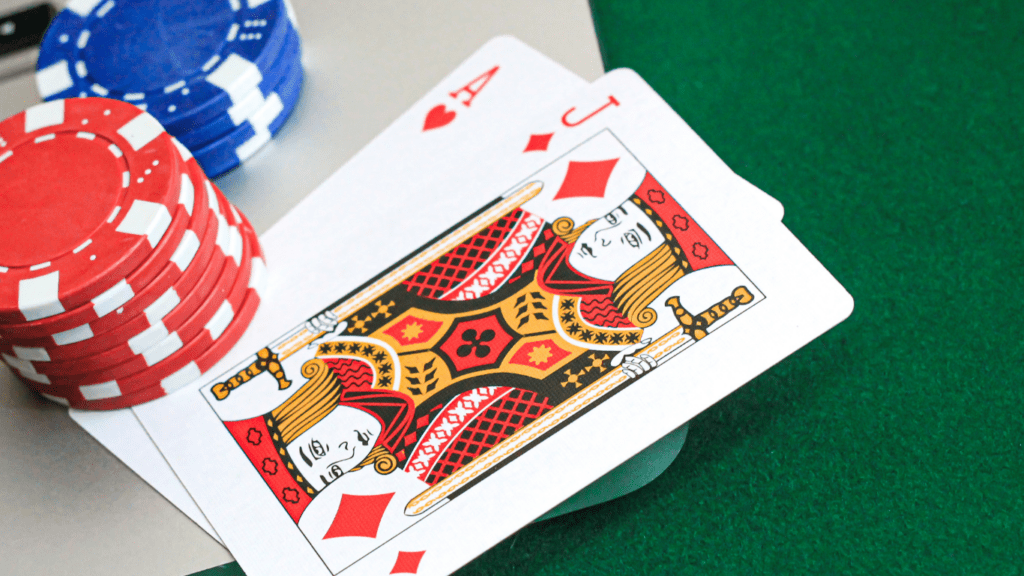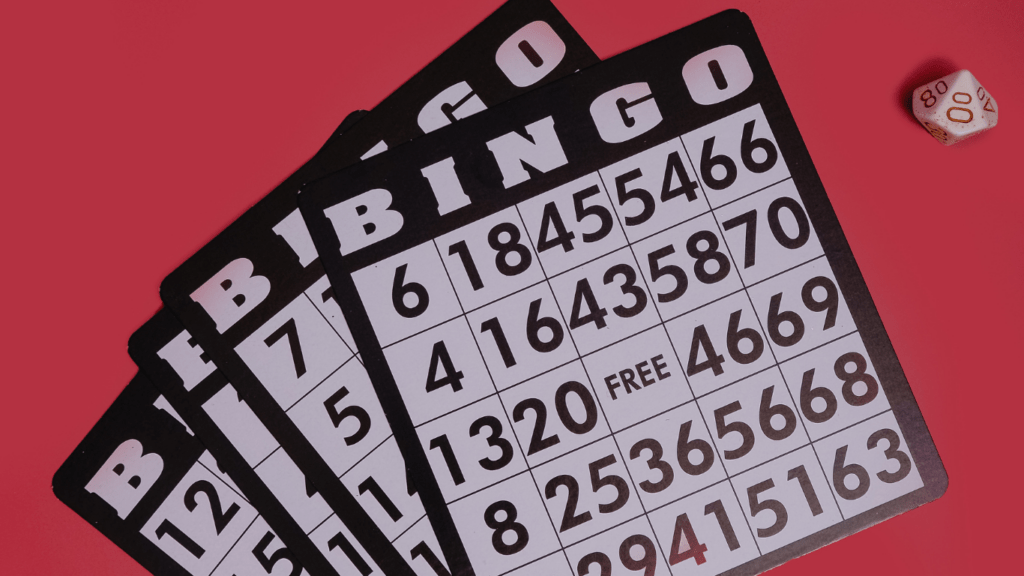Understanding the Basics of Poker
Poker combines skill, strategy, and psychology. Players compete to form the highest-ranked hand. Texas Hold’em is a popular variant. In Texas Hold’em, each player receives two private cards, and five community cards are dealt face-up.
Hand Rankings
Knowing hand rankings is essential to playing poker effectively. The strongest hands include:
- Royal Flush: A, K, Q, J, 10, all of the same suit.
- Straight Flush: Five consecutive cards of the same suit.
- Four of a Kind: Four cards of the same rank.
- Full House: Three of a kind plus a pair.
- Flush: Five cards of the same suit, not in sequence.
Betting Rounds
Understanding betting rounds helps in making strategic decisions. The main rounds:
- Pre-Flop: Bets placed after receiving private cards.
- Flop: Bets placed after the first three community cards are revealed.
- Turn: Bets placed after the fourth community card.
- River: Bets placed after the fifth community card.
Positional Awareness
Positional awareness affects decision-making. The “button” is crucial, rotating clockwise after each hand. Positions:
- Early Position (EP): First to act, indicating weaker positions.
- Middle Position (MP): Later in the order, providing more information.
- Late Position (LP): Last to act, holding strategic advantage.
Basic Strategies
Basic strategies improve your game. Key elements:
- Starting Hand Selection: Play strong hands like high pairs, Ace-King.
- Aggression: Bet and raise more than call or check.
- Bluffing: Mislead opponents, but use it sparingly.
Understanding these basics forms a foundation for advanced techniques. Knowing hand rankings, betting rounds, and positional awareness is fundamental for success in advanced poker strategies.
Key Advanced Techniques
Advanced poker techniques can transform a player’s game, providing a consistent edge over opponents. These methods involve deep strategy and calculated risks.
Bluffing Strategies
Bluffing’s pivotal in advanced poker, creating opportunities to win even with weak hands. I use two main types: pure bluffs and semi-bluffs. Pure bluffs involve betting or raising with a hand that’s unlikely to improve, while semi-bluffs include drawing hands that may become strong. By analyzing opponents’ tendencies and identifying moments of weakness, I determine the right instances to execute bluffs. Successful bluffing depends on table image; frequent bluffing makes opponents more likely to call.
Hand Reading
Hand reading’s about deducing opponents’ possible hands based on their actions. I pay close attention to bet sizes, timing, and patterns. When an opponent raises pre-flop, continues to bet post-flop, then checks the river, these actions provide clues. Narrowing down their range through each betting round requires observing not only what cards are shared but also the opponent’s behavior. Accurate hand reading helps in making informed decisions.
Positional Play
Positional play’s a critical aspect of advanced poker, giving players an advantage when acting later in the betting rounds. I leverage my position to gather information and control pot size. Being on the button allows me to see everyone’s actions before making my move, enabling strategic decisions. Conversely, being in an early position means cautious play, as information’s limited. Understanding and exploiting position enhance both bluffing and strong hand play, leading to more consistent wins.
Psychological Aspects of Poker

Advanced poker techniques are vital, but understanding psychological aspects can significantly enhance performance. Comprehending how players’ minds work during games is crucial.
Table Image
A table image is how others perceive a player at the table. Maintaining a consistent table image helps control opponents’ reactions. If perceived as a tight player, opponents expect strong hands, aiding in bluff situations. Conversely, a loose image can result in more calls when holding strong hands.
Adapt table image based on table dynamics and opponent tendencies. Frequent involvement in pots can label a player as loose-aggressive, leveraging this to manipulate calls and folds. Protective measures, like adjusting play style, keep opponents guessing and bolster strategic advantage.
Tilt Management
Tilt management is critical for maintaining composure and rational decision-making. Tilt refers to emotional responses affecting gameplay, often leading to suboptimal decisions. Recognizing signs of tilt, like frustration or increased aggression, is the first step in managing it.
Employ techniques such as deep breathing, short breaks, or shifting focus to regain control. Set predefined limits on losses and incorporate meditation or mindfulness practices. A controlled mindset reduces mistakes and promotes better decision-making, leading to more consistent wins.
Understanding psychological factors, including table image and tilt management, is essential for advanced poker players aiming for consistent success.
Mathematical Concepts in Poker
Understanding mathematical concepts in poker boosts consistent winning strategies. Here, I’ll explain key concepts like pot odds, implied odds, and expected value.
Pot Odds and Implied Odds
Pot odds indicate the ratio of the current size of the pot to the cost of a contemplated call. For example, if the pot is $100 and it costs $20 to call, the pot odds are 5:1. Comparing pot odds to the odds of completing a drawing hand helps in deciding whether to call.
Implied odds consider future bets to win additional money beyond the current pot size. If the current odds don’t justify a call, implied odds can, if future betting rounds promise extra funds. For instance, holding a drawing hand with an expectation that an opponent will bet more in future rounds can justify a call due to implied odds.
Expected Value (EV)
Expected value (EV) measures the average outcome of a particular decision, providing a mathematical basis for strategic choices. Calculating EV involves multiplying the probability of each possible outcome by its corresponding payoffs and summing these values. This helps in determining if a decision is profitable in the long run.
For instance, if a $20 bet wins $100 half of the time and loses $20 the other half, the EV is calculated as follows: (0.5 * $100) + (0.5 * -$20) = $50 – $10 = $40. In this scenario, the positive EV (+$40) indicates a profitable decision.
Mastering these mathematical concepts aids in making informed decisions, leading to more consistent wins in poker games.
Practice and Application
Advanced poker techniques demand regular practice and real-world application. Consistency in training improves decision-making and enhances gameplay.
Online Training Tools
Online training tools offer accessible platforms to hone skills. Poker training sites, forums, and software can simulate real-game scenarios. Resources like advanced hand analysis tools and equity calculators provide valuable insights. Solvers help analyze complex hand situations. Video tutorials from professional players demonstrate advanced strategies in action.
Live Game Practice
Live game practice integrates learned techniques in authentic settings. Regular participation in live games builds experience and sharpens instincts. Observing opponents’ behavior and betting patterns becomes crucial. Home games or local tournaments offer practical exposure without high stakes. Live practice is essential for mastering body language cues and table dynamics.



 Earlee Nelsonallers – Founder
Earlee Nelsonallers is the visionary founder of Smart Gamble Land, bringing over two decades of experience in the gambling industry. Passionate about strategy and innovation, Earlee has made it his mission to provide gamblers with advanced insights into winning techniques, effective betting systems, and casino game mastery. His deep understanding of gambling psychology has been the driving force behind the platform's success, making Smart Gamble Land a go-to resource for players seeking an edge. Earlee's dedication to educating and empowering gamblers sets the foundation for the platform's authoritative content.
Earlee Nelsonallers – Founder
Earlee Nelsonallers is the visionary founder of Smart Gamble Land, bringing over two decades of experience in the gambling industry. Passionate about strategy and innovation, Earlee has made it his mission to provide gamblers with advanced insights into winning techniques, effective betting systems, and casino game mastery. His deep understanding of gambling psychology has been the driving force behind the platform's success, making Smart Gamble Land a go-to resource for players seeking an edge. Earlee's dedication to educating and empowering gamblers sets the foundation for the platform's authoritative content.
